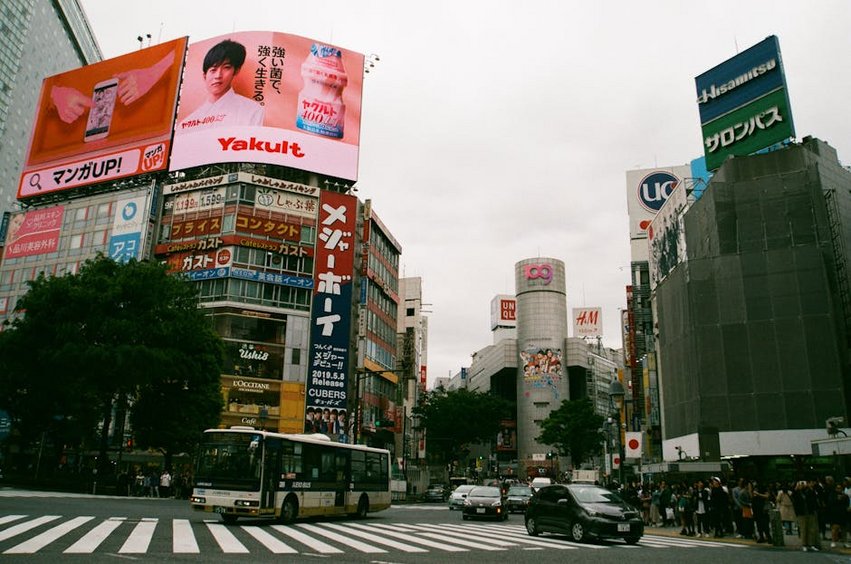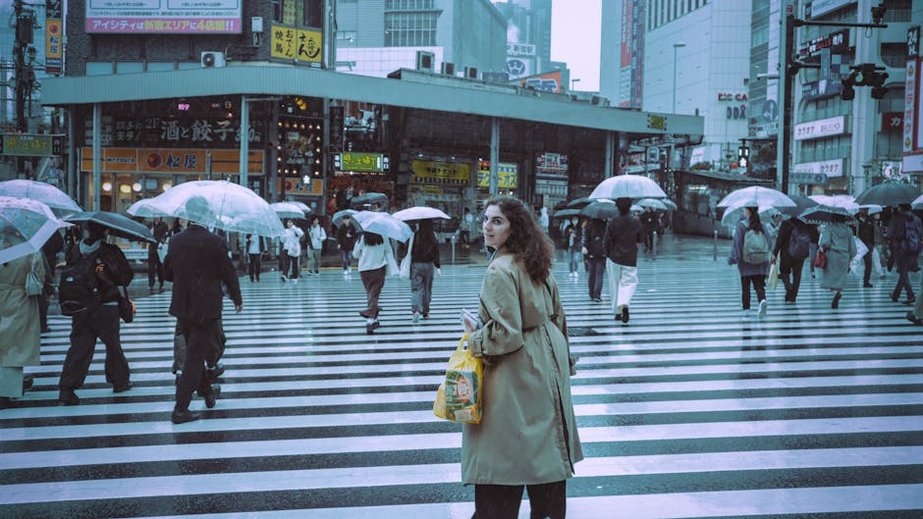Tokyo Shibuya Crossing: Your Ultimate Guide to the World’s Busiest Intersection
Welcome to Tokyo Shibuya Crossing, the iconic pedestrian scramble that has become synonymous with modern Tokyo and Japanese urban culture. As you stand at this world-famous intersection, you’ll witness the organized chaos of thousands of people crossing simultaneously from all directions, creating a mesmerizing human river that represents the pulse of Japan’s capital city. Tokyo Shibuya Crossing isn’t just a transportation hub—it’s a cultural phenomenon, a photographic masterpiece, and an essential Tokyo experience that captures the energy and efficiency of Japanese society. Whether you’re visiting for the first time or returning to experience its magic, this crossing offers something unique at every hour of the day and night. From the towering digital billboards to the famous Hachiko statue meeting point, Tokyo Shibuya Crossing embodies the perfect blend of tradition and hyper-modernity that defines contemporary Japan.
Tokyo Shibuya Crossing Essential Information – What Every Visitor Should Know
Understanding the logistics and significance of Tokyo Shibuya Crossing will dramatically enhance your experience. This isn’t merely a place to cross the street—it’s a destination in itself, with layers of history, culture, and urban planning that make it uniquely fascinating. The crossing handles approximately 2,500-3,000 pedestrians with each light change during peak hours, with estimates suggesting over one million people pass through daily. The area surrounding the crossing represents the commercial and cultural heart of Shibuya ward, featuring some of Tokyo’s most famous department stores, electronics retailers, fashion boutiques, and entertainment venues. What makes Tokyo Shibuya Crossing particularly remarkable is how this organized chaos functions with impeccable efficiency—pedestrians follow unwritten rules, vehicles respect the flow, and everything operates with the precision that Japan is famous for worldwide.
Historical Context and Development – How It Became an Icon
- Shibuya transformed from a quiet agricultural district to a bustling commercial center following the opening of Shibuya Station in 1885, with the crossing developing organically as the area grew
- The famous Hachiko statue was erected in 1934, creating a natural meeting point that increased the crossing’s popularity as a social hub
- Post-war redevelopment and the 1964 Tokyo Olympics accelerated Shibuya’s modernization, with department stores and commercial buildings reshaping the area’s footprint
- Free experience: Watching and crossing costs nothing, with free WiFi available in the area—budget $0 for the core experience
- Basic observation: Shibuya Station walkways and second-floor Starbucks provide elevated views for the price of a coffee ($4-6)
- Premium perspective: Shibuya Scramble Square observation deck (SHIBUYA SKY) costs approximately $20-25 for breathtaking 360-degree views
- Shibuya City Official Tourism Website
- Japan National Tourism Organization Shibuya Guide
- Timeout Tokyo Shibuya Crossing Overview
Architectural and Urban Design Features – Engineering the Flow
The design of Tokyo Shibuya Crossing represents some of the world’s most advanced urban planning principles. The intersection connects five major roads: Meiji-dori, Yamate-dori, Koen-dori, Dogenzaka, and Bunkamura-dori, creating a complex traffic pattern that requires precise timing. The pedestrian scramble system allows all vehicle traffic to stop simultaneously, giving people approximately 45-90 seconds to cross in any direction—including diagonally—which significantly improves pedestrian flow efficiency. The surrounding buildings feature massive digital screens and neon advertisements that create a cyberpunk aesthetic, particularly dramatic after sunset. Recent redevelopments, including the Shibuya Scramble Square skyscraper with its famous observation deck, have added new dimensions to experiencing the crossing from above.

Tokyo Shibuya Crossing Planning Your Visit – Timing and Preparation
Planning your visit to Tokyo Shibuya Crossing requires consideration of timing, perspective, and experience goals. While you can simply show up and cross with the crowds, strategic planning will help you capture the best photographs, avoid the most overwhelming crowds, and experience different aspects of this multifaceted destination. The crossing operates 24/7, but its character changes dramatically throughout the day—early morning offers relative tranquility with cleanup crews and the first commuters, midday brings shopping crowds, evening features the spectacular neon lighting, and late night presents a completely different atmosphere with nightlife participants. Budget-conscious travelers will appreciate that experiencing the crossing itself is completely free, while those seeking elevated perspectives can access various observation points for reasonable fees.
Best Time to Visit Tokyo Shibuya Crossing
The ideal time to experience Tokyo Shibuya Crossing depends entirely on what you want to see and feel. For photography enthusiasts seeking the classic “human river” shot, weekdays between 5-7 PM offer the most dramatic pedestrian traffic as office workers head home and evening shoppers arrive. Weekend afternoons (2-5 PM) provide family-friendly energy with tourists and local shoppers creating vibrant crowds. If you prefer a less intense experience, weekday mornings (9-11 AM) after rush hour subside offer manageable crowds while maintaining the crossing’s essential character. Evening visits after 8 PM showcase the spectacular digital billboards and neon lighting that make the crossing particularly photogenic. For truly unique perspectives, consider visiting during light rain when umbrellas create beautiful patterns, or during special events like New Year’s Eve when the area transforms into a massive celebration.
Budget Planning and Costs for Your Shibuya Experience
Essential Preparation Checklist for Visitors
Preparing for your Tokyo Shibuya Crossing visit ensures you make the most of this unique urban experience. Wear comfortable walking shoes as you’ll likely spend hours exploring the surrounding area beyond just the crossing itself. Bring a camera or smartphone with good low-light capabilities for evening photography when the neon signs create magical effects. Download offline maps since the crowded environment can challenge cellular reception, and consider bringing a small umbrella as the open crossing offers no protection from rain. Have cash available for spontaneous purchases at surrounding stores and cafes, though credit cards are widely accepted. Most importantly, prepare mentally for the sensory overload—the crossing can be overwhelming for those unaccustomed to dense urban environments, so take breaks in nearby cafes if needed.
Tokyo Shibuya Crossing Top Attractions and Activities – Beyond the Intersection
While the crossing itself is the main attraction, the surrounding Shibuya area offers countless experiences that complement your visit. The neighborhood serves as Tokyo’s youth fashion and culture capital, with cutting-edge trends emerging from its countless boutiques and department stores. Beyond shopping, Shibuya offers historical sites, beautiful parks, entertainment venues, and some of Tokyo’s best dining experiences. The area is walkable and easily navigated, with most attractions located within 10-15 minutes of the main crossing. First-time visitors should allocate at least half a day to properly experience Shibuya, while those interested in shopping and deeper exploration might need multiple days. The efficient Tokyo metro system makes it easy to combine a Shibuya visit with exploration of neighboring areas like Harajuku, Omotesando, and Ebisu.
Must-See Highlights Around the Crossing
No visit to Tokyo Shibuya Crossing is complete without experiencing its iconic landmarks and attractions. The Hachiko Statue serves as Tokyo’s most famous meeting point, commemorating the loyal dog who waited for his deceased owner every day at Shibuya Station—this touching story embodies Japanese values of loyalty and devotion. The Shibuya 109 department store represents the epicenter of Japanese youth fashion, with its distinctive cylindrical building housing countless boutiques targeting young women. For technology enthusiasts, the massive electronics retailers like Bic Camera and Yodobashi Camera offer multi-floor shopping experiences with the latest gadgets. The recently developed Shibuya Scramble Square complex features luxury shopping, dining, and the spectacular SHIBUYA SKY observation deck that provides the ultimate bird’s-eye view of the crossing below.
Hidden Gems and Local Favorites
Beyond the famous landmarks, Shibuya contains numerous hidden gems that most tourists overlook. The Shibuya River, now completely covered and running beneath the streets, features occasional viewing windows that reveal this hidden waterway that once defined the area’s geography. Nonbei Yokocho (Drunkard’s Alley) offers a nostalgic glimpse of post-war Japan with tiny bars and eateries crammed into narrow alleyways—perfect for evening drinks and conversation. The Bunkamura cultural complex provides sophisticated respite from the commercial frenzy with art museums, concert halls, and a beautiful cinema. For nature lovers, the nearby Miyashita Park has been transformed into an innovative urban park with shopping, dining, and even a climbing wall on its roof. Local shoppers know that the backstreets behind the main crossing contain the most interesting fashion boutiques and cafes, away from the mainstream crowds.
Tokyo Shibuya Crossing Practical Travel Information – Navigation and Accommodation
Navigating Tokyo Shibuya Crossing and its surrounding area requires understanding Tokyo’s efficient but complex transportation system. Shibuya Station serves as one of Tokyo’s busiest transportation hubs, with multiple train and subway lines converging beneath the crossing. The station itself is a labyrinth that can challenge first-time visitors, though excellent signage in English and other languages helps navigation. When choosing accommodation, consider whether you want to be in the immediate Shibuya area or in a neighboring district with easy access—staying directly in Shibuya puts you in the heart of the action but can be noisy and expensive, while adjacent areas offer more tranquility while remaining convenient. The entire Shibuya area is extremely walkable, with pedestrian-friendly streets and numerous underground passages that help manage the massive crowds.
| Accommodation Type | Features and Recommendations | Price Range (USD per night) |
|---|---|---|
| Budget Business Hotels | Small but efficient rooms near station, basic amenities | $80-120 |
| Mid-range Hotels | Larger rooms, better amenities, walking distance to crossing | $150-250 |
| Luxury Hotels | Premium locations, spectacular views, full services | $300-600+ |
| Apartment Rentals | More space, kitchen facilities, residential areas | $100-300 |


